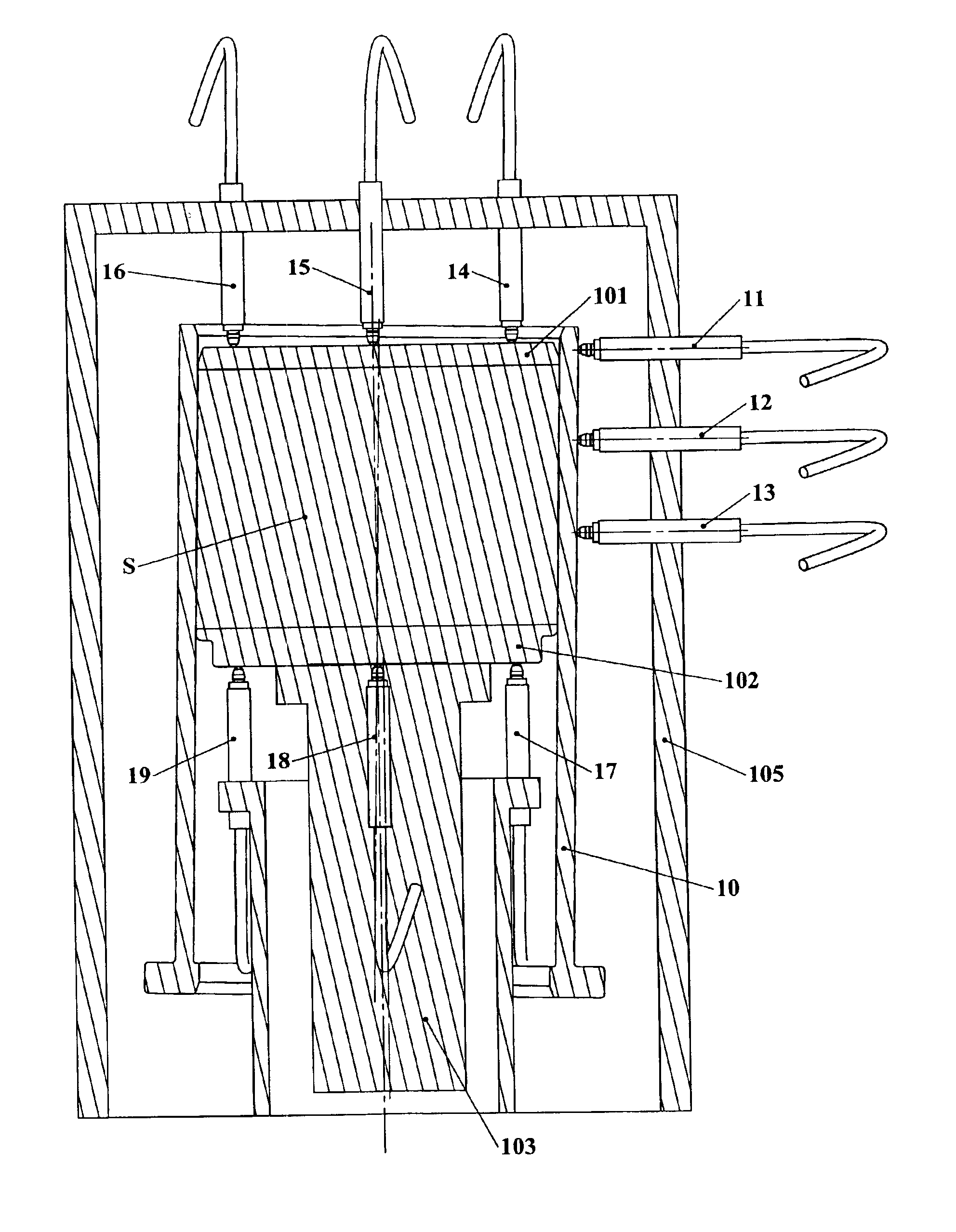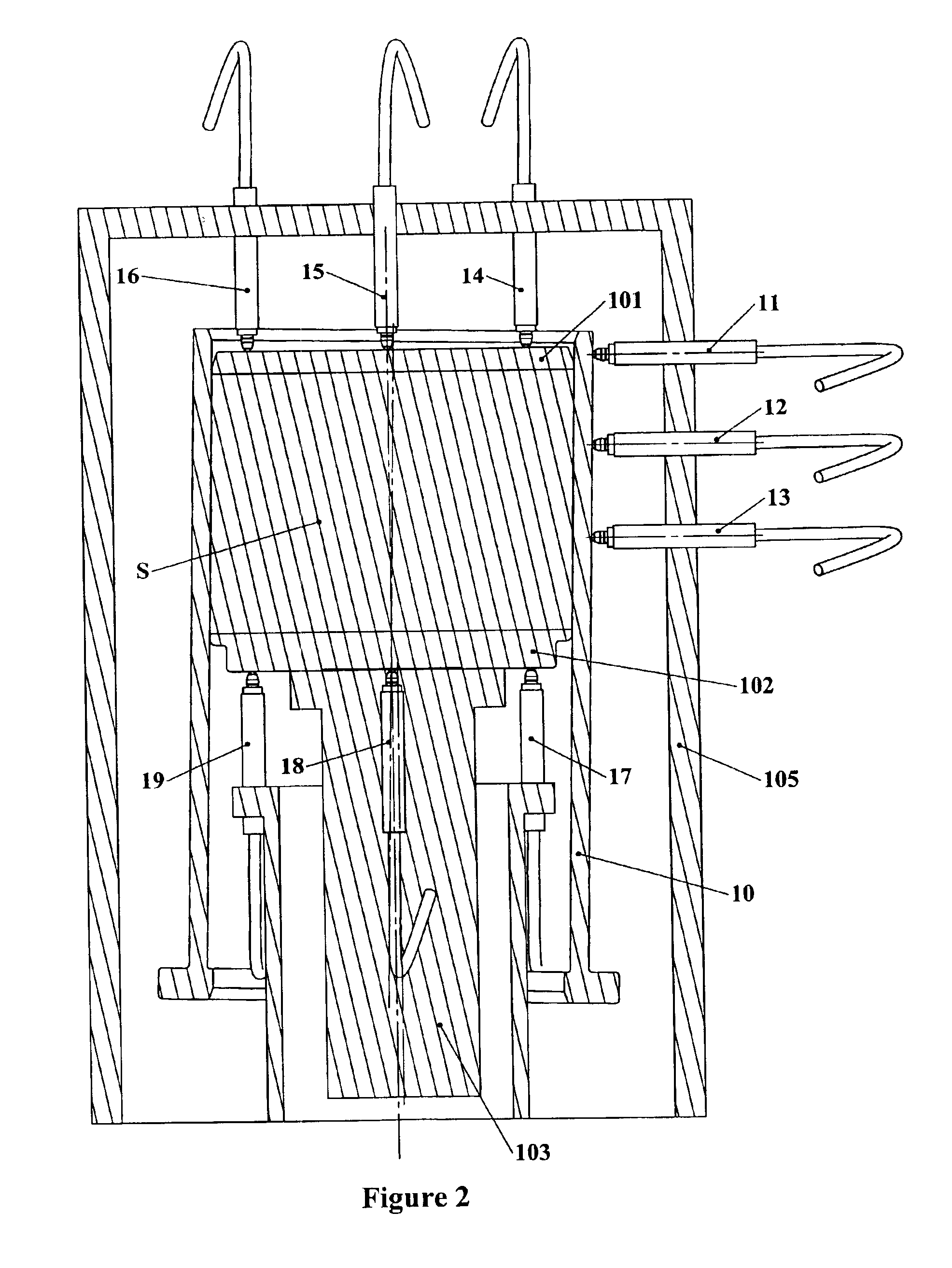Real-time display of internal gyration angle in gyratory compaction material testing
a compaction material and real-time display technology, applied in the field of real-time display of internal gyration angle in gyratory compaction material testing, can solve the problems of inaccurate test, insufficient attention to features, and machines which do not maintain internal angles
- Summary
- Abstract
- Description
- Claims
- Application Information
AI Technical Summary
Benefits of technology
Problems solved by technology
Method used
Image
Examples
Embodiment Construction
[0020]FIG. 1 illustrates a mold cylinder 10 of the type commonly used in a gyratory compactor. Within the mold cylinder 10 is positioned a first mold plate 101 and a second mold plate 102, between which a material specimen S such as HMA is placed and compacted by a compaction ram 103 which passes through one end of the mold. A gyratory compactor machine typically has a frame 105 for, among other things, supporting the mold in a generally vertical orientation, a gyration mechanism which engages or moves the mold to gyrate it about its axis, i.e., to move one end of an axis of the mold cylinder in a circle while the opposite end of the axis is held substantially at one point; and a ram 103 (also referred to as a “compaction ram”) which is advanced or driven through one of the ends of the mold cylinder 10 against one of the mold end plates 101 or 102 (as shown, against mold plate 101). Alternatively, the ram 103 may have a material contacting surface which contacts the material specime...
PUM
| Property | Measurement | Unit |
|---|---|---|
| mold gyration angle | aaaaa | aaaaa |
| internal angle of gyration | aaaaa | aaaaa |
| angle of gyration | aaaaa | aaaaa |
Abstract
Description
Claims
Application Information
 Login to View More
Login to View More - R&D
- Intellectual Property
- Life Sciences
- Materials
- Tech Scout
- Unparalleled Data Quality
- Higher Quality Content
- 60% Fewer Hallucinations
Browse by: Latest US Patents, China's latest patents, Technical Efficacy Thesaurus, Application Domain, Technology Topic, Popular Technical Reports.
© 2025 PatSnap. All rights reserved.Legal|Privacy policy|Modern Slavery Act Transparency Statement|Sitemap|About US| Contact US: help@patsnap.com



